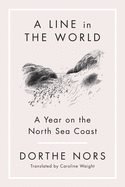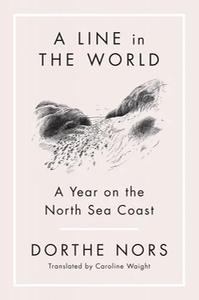
 For readers whose knowledge of Denmark is confined to Copenhagen and its environs, Danish writer Dorthe Nors's A Line in the World: A Year on the North Sea Coast will come as a revelation. In 14 eloquent, observant essays that combine journalism, nature writing and memoir, Nors paints a vivid portrait of a remote and rugged territory whose striking scenery masks more than its share of dangers.
For readers whose knowledge of Denmark is confined to Copenhagen and its environs, Danish writer Dorthe Nors's A Line in the World: A Year on the North Sea Coast will come as a revelation. In 14 eloquent, observant essays that combine journalism, nature writing and memoir, Nors paints a vivid portrait of a remote and rugged territory whose striking scenery masks more than its share of dangers.
Though the essays describe a year of episodic travels, Nors (Mirror, Shoulder, Signal; Karate Chop) forgoes a strict chronology. Instead, from the Wadden Sea in the south to Skagen at its northern tip, she hopscotches along the 600 miles of what she calls "one of the world's most dangerous coastlines," at the western edge of the peninsula known as Jutland, where she grew up and lives today.
Nors's interests range widely, encompassing history, religion, sociology, culture and an assortment of scientific disciplines. In "The Timeless," for example, her description of the day she and her artist friend Signe Parkins, whose drawings enhance the book, spent viewing rural church frescoes, she touches on the status of women in traditional Danish society, and describes how her mother's youthful dreams of pursuing an artistic career were frustrated and only realized, in part, in adulthood. The essay "West by Water" opens with a scene of Nors gazing out from a lighthouse toward a vast offshore wind farm at the coastline's westernmost point, and then flows seamlessly into a reflection on the history of the Vikings, an age that "has gone down to rest on the seabed, among the seaweed and the shoals of herring."
In some of the book's most dramatic passages, Nors offers colorful descriptions of the raging North Sea gales, whose hurricane-force winds and murderous storm surges periodically batter this coastline. One of the earliest recorded was Saint Marcellus's flood (known in Danish as the Great Drowning of Men) in January 1362, in which "thousands of people and animals drowned, great tracts of land disappeared, and a number of the islands we know today were formed in a single night." On Christmas night in 1811, a storm took the lives of more than 1,300 people and destroyed two famous British ships. Throughout the ensuing winter, she writes, "bodies washed ashore along the line like dead seals. Mass graves had to be dug, dead man's mountains, in the dunes."
Nors's prose, translated from the Danish by Caroline Waight, is both economical and expressive. When she's writing about nature she has a pleasing knack for engaging all the senses, and when she turns to some aspect of her family history, her candor is seasoned with a pinch of Scandinavian reserve. For all these reasons and more, A Line in the World will appeal to a wide audience of discerning and curious readers. ---Harvey Freedenberg, freelance reviewer
Shelf Talker: In a collection of 14 precisely observed essays, Danish writer Dorthe Nors surveys the history, geography and culture of Denmark's western coast.

